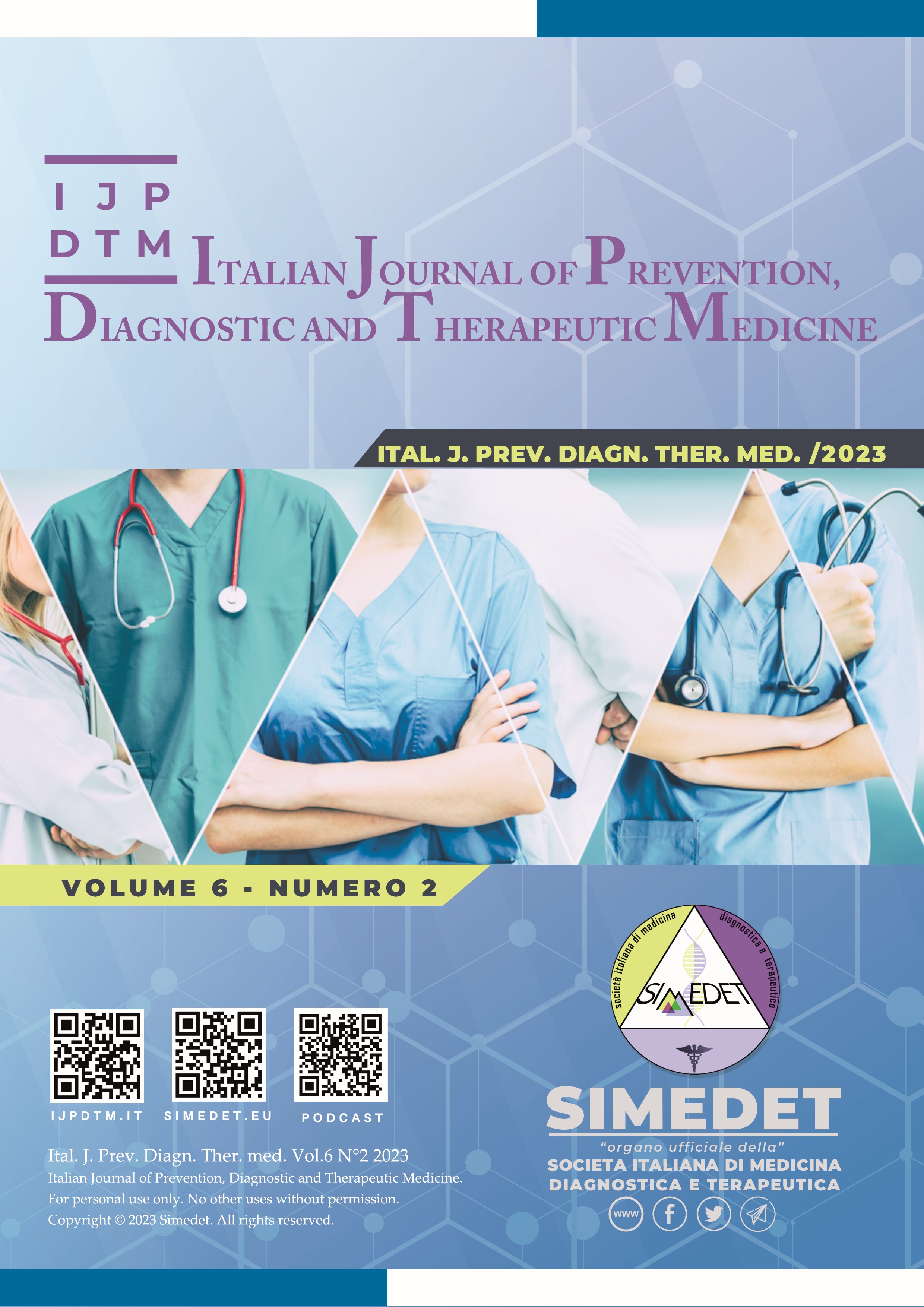Antisettici e Disinfettanti
Contenuto principale dell'articolo
Abstract
La classificazione degli antisettici e disinfettanti è regolata dalle norme europee UNI EN 14885/2019 entrate in vigore il 31 gennaio 2019 che definiscono gli standard normativi a cui devono fare riferimento i produttori e le caratteristiche alle quali tali prodotti devono essere conformi per la registrazione delle specifiche attività biocide.
Downloads
Dettagli dell'articolo

Questo lavoro è fornito con la licenza Creative Commons Attribuzione - Non commerciale - Non opere derivate 4.0 Internazionale.
Riferimenti bibliografici
Morrison RT, Boyd N; Chimica Organica, 3° edizione, casa editrice Ambrosiana, Milano.
Sienko MJ, Plane RA: Chimica, Piccin Editore Padova Quarta Edizione .
Wade RG, Burr NE, McCauley G et el The Comparative efficacy of Chlorhexidine Gluconate and Povidone-iodine Antiseptics for the Prevention of Infection in Clean Surgery: A Systematic Review and Network Meta-analysis;2021 Ann Surg 1;274(6):481-488.
Ferretti GA, Brown AT, Raybould TP et al; Oral antimicrobial agents—chlorhexidine NCI Monogr. 1990;(9):51-5.
Gilmore M, Cole A, DeGrazia M; Evidence-based review of chlorhexidine gluconate and iodine in the preoperative skin preparation of young infants J Spec Pediatr Nurs 2022 Oct;27(4).
Vanzi V, Pitaro R; Skin Injuries and Chlorhexidine Gluconate-Based Antisepsis in Early Premature Infants: A Case Report and Review of the Literature J Perinat Neonatal Nurs 2018 Oct/Dec;32(4):341-350.
Coulter WA, Russell C Effect of chlorhexidine on plaque development in an artificial mouth. Microbios. 1976;16(63):21-8.
Seidelman JL, Mantyh CR, Anderson DJ; Surgical Site Infection Prevention: A Review JAMA, 2023 Jan 17;329(3):244-252.
F D D’Auria, G Simonetti, V Strippoli Antimicrobial activity exerted by sodium dichloroisocyanurate] Ann Ig 1989 1(6):1445-58.
Flynn J: Povidone-iodine as a topical antiseptic for treating and preventing wound infection: a literature review; Br J Community Nurs 2003 Jun;8(6 Suppl):36-42.
Wang Y, Wu Y, Wang Q, : Effetto virucida di povidone-iodio contro SARS-CoV-2 in vitro J Int Med . . Res 2021 Dicembre;49(12)
Seet RCS, Quek AML, Ooi DSQ; Positive impact of oral hydroxychloroquine and povidone-iodine throat spray for COVID-19 prophylaxis: An open-label randomized trial. Int J Infect Dis. 2021 May;106:314-322.
Stathis C, Victoria N, Loomis K Review of the use of nasal and oral antiseptics during a global pandemic.Future Microbiol. 2021 Jan;16(2):119-130.
Lim NA , Teng O, Yan Hao Ng C, Repurposing povidone-iodine to reduce the risk of SARS-CoV-2 infection and transmission: a narrative review. Ann Med 2 Dec;54(1);1488-1499.
Riad A,Yilmaz G, Boccuzzi M: Iodio molecolare Fr Dent J. 2020; 229(5): 265–266. Pubblicato online 2020 Sep 11.
Migneault I, Dartiguenave C, Bertrand M; “Glutaraldehyde: Behavior in aqueous solution, reaction with proteins, and application to enzyme crosslinking”2004; BioTechniques 37 (5): 790–802.
Tezel U, Pavlostathis SG; Quaternary ammonium disinfectants: microbial adaptation, degradation and ecology Curr Opin Biotechnol Curr Opin Biotechnol 2015 Jun;33:296-304.
Buffet-Bataillon S, Tattevin P, Bonnaure-Mallet M et al; Emergence of resistance to antibacterial agents: The role of quaternary ammonium compounds a critical review; Int J Antimicrob Agents 2012 May;39(5):381-9.
Hana Malenovska H: Coronavirus Persistence on a Plastic Carrier Under Refrigeration Conditions and Its Reduction Using Wet Wiping Technique, with Respect to Food Safety. Food and environmental virology (2020-10-16).
Cutts T, Kasloff S, Safronetz D et al: Decontamination of common healthcare facility surfaces contaminated with SARS-CoV-2 using peracetic acid dry fogging J Hosp Infect. 2021 Mar; 109: 82–87.

